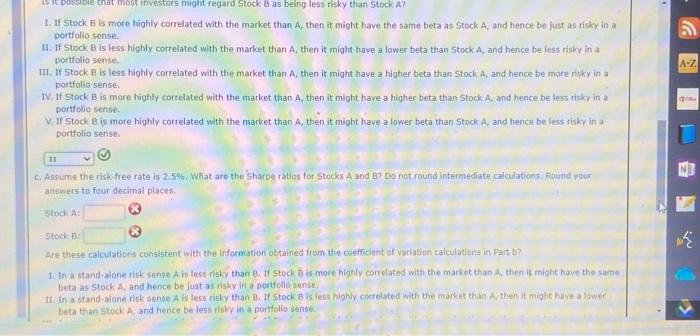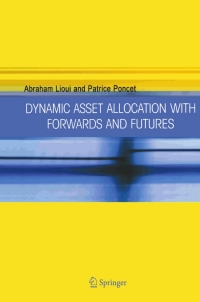Stocks A and B have the following probability distributions of expected future returns: a. Calculate the expected rate of return, rB, for 5tockB(rA=14.60%0) Do not round intermediate calculations, Hound your answer to two decimal places. (8) b. Calculate the standard devation of expected returns, on, for Stock A ( (B=16.73%.) Do not round intermediate calculations, Round your answer to two decimal places. (6) Now calculate the coeficient of varlation for Stock B. Do not round intermediate calculations, Round your answer to two decimal places: Ts it possible that most investors might regard Stock B as being less risky than Stock A? 1. If stock B is more highly correlated with the market than A, then it miohit have the same beta as stock A, and hence be fust as nisky in a portfolio sense. 11. If Stock B is less highly correlated with the market than A, then it might have a lower beta than Stock A, and hence be less risky in a portfolio sense. 1. If Stock B is more highly correlated with the market than A, then it might have the same beta as Stock A, and hence be fust as risky in a portfolio sense. II. If Stock B is less highy correlated with the market than A, then it might have a lower beta than stock A, and hence be loss risky in a portfolio sense. III. If Stock B is less highly correlated with the market than A, then it might have a higher beta than Stock A, and hence be more risky in a portfolio sense. IV. If Stock B is more highly correlated with the market than A, then it might have a higher beta than stock A, and hence be less risky in a portolio sense. V. If Stock B is more highly correlated with the market than A, then it might have a lower beta than 5 tock A, and hence be less risky in a portfolio sense. c. Assume the risk-free rate is 2.5%. Whiat are the Sharbe ratios for stocks A and B? Do not round intermediate calculations, Aound vour answers to four decimal places. Stock At Stock B: Are these calcalations consistent with the information obtained from the coefficlent of variation calculations in Part, b? 1. In a stand-alone risk sense A is less risty than B. If Stock B is more highli coirelated with the market than A, then if might have the same beta as Stock A, and hence be Just as ristry in a portfollo sense. II In a stand-aione risk sense A is less risky than B. If Stock B is less highiv correlated with the market than A, then it might have a lower beta than stock A, and hence be less risky in a portolio sense








